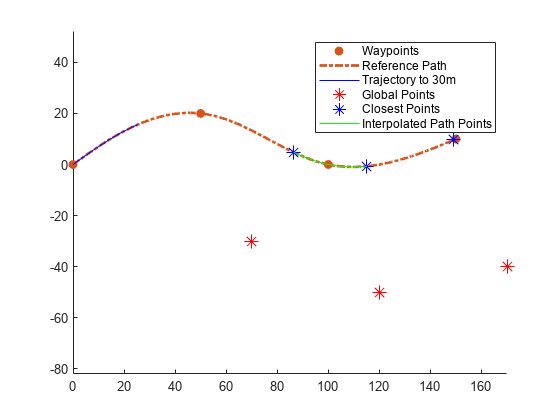closestPoint
Find closest point on reference path to global point
Syntax
Description
pathPoints = closestPoint(refPath,points)points.
[
optionally returns a logical vector pathPoints,inWindow] = closestPoint(refPath,points)inWindow, specifying whether each
point for the corresponding xy coordinate in points
is projected within the search window..
[_] = closestPoint(
optionally accepts a nondecreasing row vector refPath,points,searchWindow)searchWindow, which
defines the interval of the path to use to find the closest points.
Examples
Input Arguments
Output Arguments
Extended Capabilities
Version History
Introduced in R2020b






